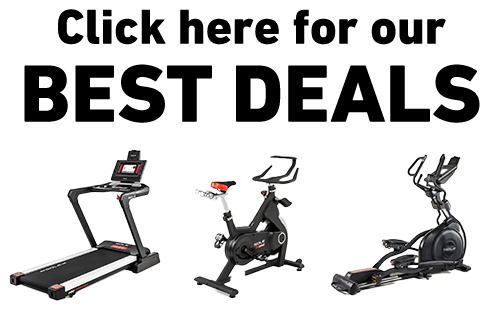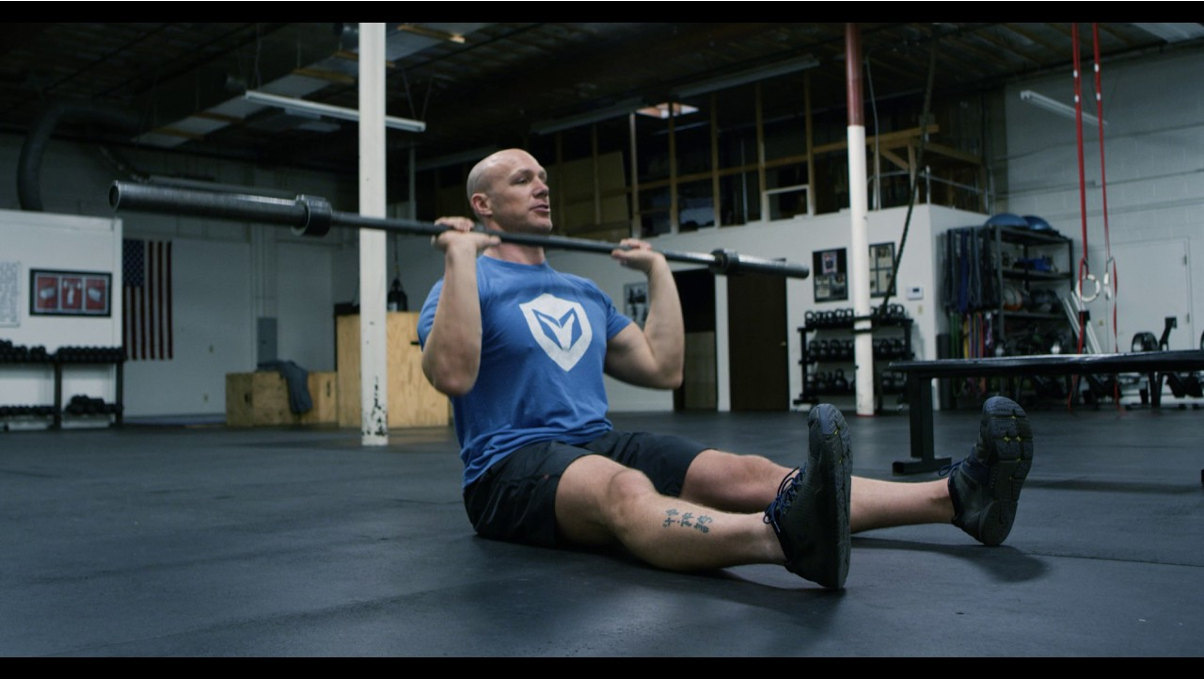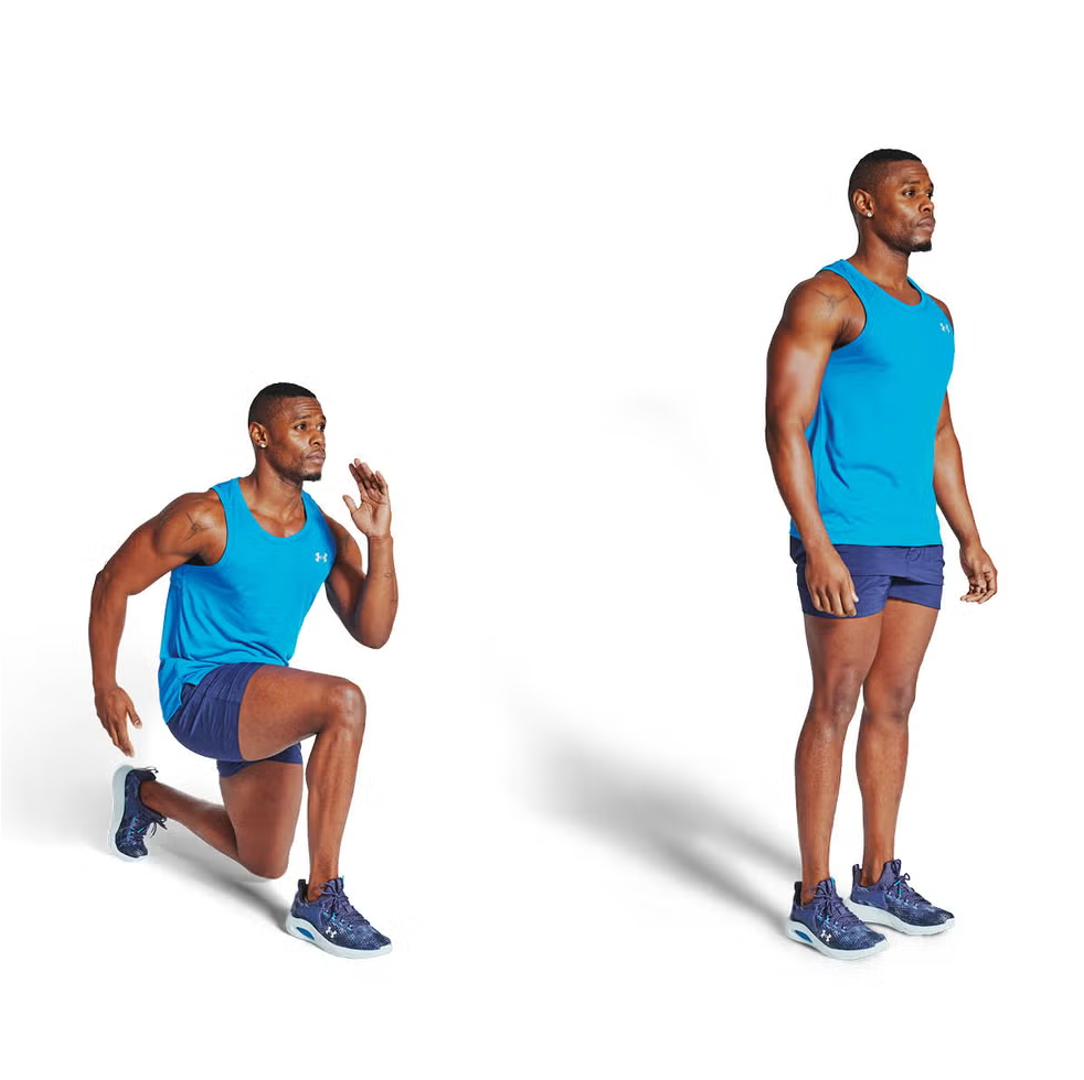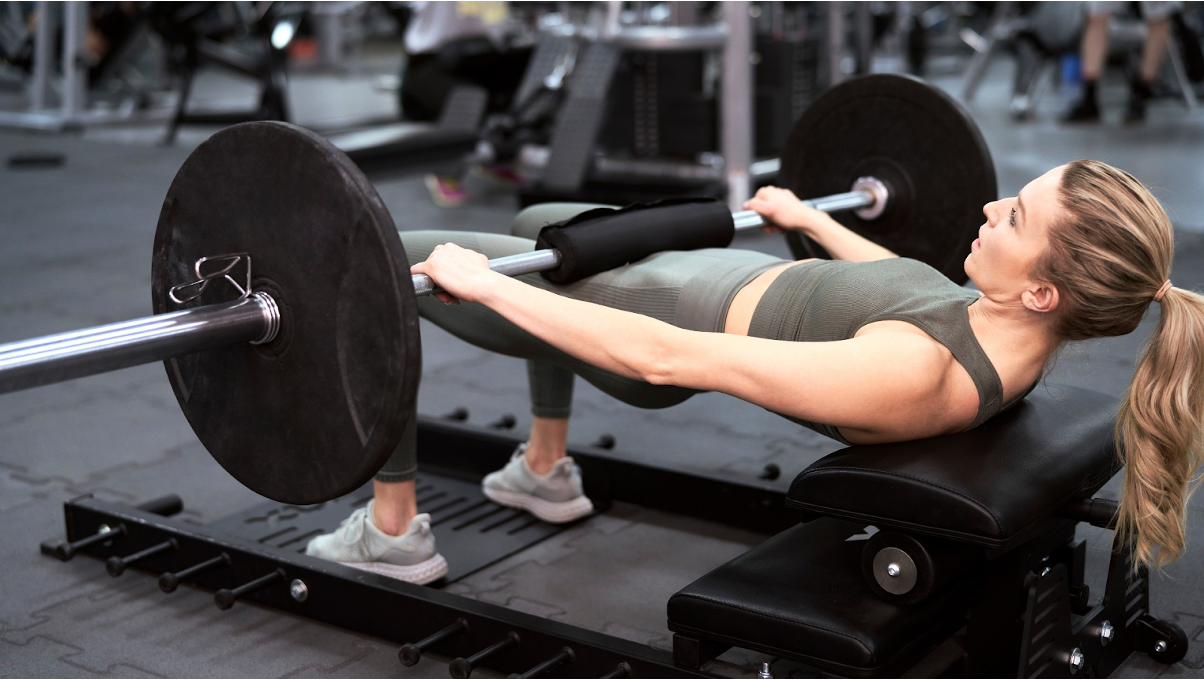Key Takeaways
- The Z Press is basically overhead pressing on nightmare mode. No lower body help, no back support, just you versus gravity.
- This exercise will expose every weakness in your shoulders, core, and mobility while building incredible strength in all three areas.
- Expect to use 40–60% less weight than your regular overhead press and still feel like you got hit by a truck.
- The Z Press can be modified with dumbbells, kettlebells, or landmine attachments for those working around mobility limitations.
- SOLE Olympic barbell and adjustable dumbbells provide the perfect progression system for Z Press mastery, start with dumbbells to learn the movement pattern safely, then advance to the barbell for maximum stability challenge.
Z Press Basics
What Is It?
The Z Press is a seated overhead pressing exercise performed without back support while sitting on the floor with legs extended straight in front of you.
Unlike traditional seated presses, your legs are stretched out rather than bent at 90 degrees, eliminating any possibility of using leg drive to assist the movement. This creates a pure upper body and core movement that tests your true pressing strength, stability, and mobility.
The exercise can be performed with various implements including barbells, dumbbells, and kettlebells, but the barbell version is typically the most challenging due to the fixed hand position and greater stability demands.
Origin Story
The Z Press gets its name from Lithuanian Strongman Žydrūnas Savickas (known as "Big Z"), widely considered one of the strongest overhead pressers in history. Savickas reportedly used this variation to build his legendary pressing strength. While seated on the floor with legs extended, he would press tremendous weights overhead, demonstrating exceptional core strength and shoulder power simultaneously.
Why It's Challenging
Make no mistake, the Z Press is not your average shoulder exercise. The combination of stability requirements, mobility demands, and strength challenges creates a perfect storm that humbles even experienced lifters. When you first attempt this movement, expect to use significantly less weight than your standard overhead press.
The primary challenge comes from the elimination of any lower body contribution. In a standard overhead press, your legs provide a stable base and can even contribute subtle momentum. By contrast, the Z Press forces your core to become the foundation, requiring tremendous midline stability while simultaneously pressing weight overhead.
|
At SOLE, we're proud to offer top-quality exercise equipment designed for home and gym use. Our machines are built to meet the highest standards of durability and performance, making them ideal for fitness enthusiasts at any level. SOLE Products
|
Proper Technique
The Z Press gained popularity in CrossFit and functional fitness communities and is now used across strength sports for shoulder development and core stabilization. (Image courtesy of Barbend)
Starting Position
Begin by sitting on the floor with your legs extended straight in front of you. Your legs should be together or slightly apart, just enough to create a stable base. If you're using a barbell, you'll need a rack set up at an appropriate height or assistance from a training partner to help position the bar across your upper chest in a front rack position.
Sit as tall as possible with your spine neutral, chest up, and core engaged. Your feet should be flexed (toes pointing toward the ceiling), which helps engage your entire posterior chain. If hamstring tightness prevents you from sitting upright, you can slightly bend your knees or sit on a small plate or mat to elevate your hips slightly.
Execution Steps
Take a deep breath, brace your core, and press the barbell overhead in a straight line. Keep your elbows under the bar throughout the movement, not flared out to the sides. As you press, maintain your upright torso position. Any leaning back is a sign you're compensating for insufficient shoulder mobility or core strength.
At the top position, your arms should be fully extended with the barbell directly over your shoulders or slightly behind them. Hold briefly at the top, maintaining full body tension. Lower the bar under control back to the front rack position, maintaining your upright posture throughout the entire movement.
Throughout the exercise, your legs should remain extended and in contact with the floor. If your legs begin to rise as you press, it's a clear sign you're losing core stability and compensating with momentum.
Common Mistakes
The most frequent error is allowing the torso to lean back excessively during the press. This shifts the exercise from a true Z Press to a modified decline press and reduces the core stability challenge. Another common mistake is letting the knees bend significantly, which creates a more stable base and defeats the purpose of the exercise.
Many lifters also allow their feet to rise off the floor during the pressing motion, particularly on heavier repetitions. This indicates inadequate core strength for the weight being used. (Image courtesy of Lift Manual)
Finally, attempting too much weight too soon is perhaps the most dangerous mistake, as it compromises form and increases injury risk.
Muscles Activated
Primary Movers
The deltoids (mainly the anterior and lateral heads) bear the brunt of the work during the Z Press. Your anterior deltoids drive the initial push from the front rack position, while the lateral deltoids take over as the barbell travels upward. The posterior deltoids work as stabilizers throughout the movement.
Your triceps engage strongly to lock out the weight at the top position, providing the final push as your arms extend fully overhead. The upper chest (clavicular head of the pectoralis major) also contributes significantly during the early phase of the press.
Stabilizers
What makes the Z Press truly special is the incredible demand it places on stabilizing muscles. Your rotator cuff muscles work continuously to maintain proper shoulder positioning and prevent injury. The serratus anterior and lower trapezius activate to support proper scapular movement during the overhead portion.
The upper back muscles, usually the rhomboids and upper trapezius, work isometrically to maintain posture throughout the movement.
Core Engagement
Perhaps no pressing exercise challenges the core quite like the Z Press. Your entire abdominal wall, including the rectus abdominis, transverse abdominis, and obliques, must contract powerfully to maintain your upright position. The spinal erectors work overtime to prevent your torso from collapsing backward.
Even your hip flexors and adductors become involved as they help stabilize your lower body in the seated position. This comprehensive core challenge explains why many lifters feel core fatigue before shoulder fatigue when first attempting the Z Press.
Key Benefits
Many lifters find that regular Z Press practice actually improves their standing overhead press numbers, even though they're using lighter weights in the Z Press. (Image courtesy of Nathan Kiely)
Shoulder Strength
The Z Press builds the kind of shoulder strength that doesn't require asterisks or disclaimers. With no leg drive, no back support, and no momentum, your shoulders must generate all the power. This creates pressing strength that translates directly to every other overhead movement you'll ever do.
What makes the Z Press effective for shoulder development is the strict movement pattern that prevents cheating. In regular overhead presses, it's easy to cheat slightly with body positioning or subtle momentum. The Z Press removes these escape routes, forcing your shoulders to develop legitimate strength that carries over to athletic performance and daily activities.
Core Development
Few exercises challenge your core stability quite like pressing weight overhead while balancing on your sit bones. Your entire anterior and posterior core chain must activate simultaneously to maintain position throughout the movement. This anti-extension, anti-rotation stability work builds functional core strength that carries over to nearly every other lift and athletic movement.
The seated position with extended legs creates a long lever that magnifies the core stability demands. As the weight moves overhead, your body naturally wants to compensate by leaning back, and preventing this compensation requires tremendous core control. Over time, this builds a bulletproof midsection that improves performance across all lifting patterns.
Posture Improvement
Regular Z Press practice forces improvement in thoracic extension, scapular positioning, and overall upper body posture. The exercise simply cannot be performed correctly with rounded shoulders or excessive kyphosis.
By strengthening the muscles that maintain proper spinal alignment under load, the Z Press becomes a powerful corrective exercise for modern posture problems. (Image courtesy of Dmoose)
The benefits extend beyond the gym. The postural awareness and upper back strength developed through Z Press training help counteract the forward-hunched position that many people adopt during computer work, driving, and smartphone use. You'll find yourself naturally sitting and standing taller throughout the day.
Hip Mobility
The seated position with extended legs gradually improves hip and hamstring flexibility. Even before you press any weight, simply getting into and maintaining the proper starting position serves as an effective mobility drill.
This improvement happens organically through consistent practice. As your body adapts to the demands of the Z Press position, your hip flexors lengthen, and your hamstrings gradually release tension. For many lifters, this mobility improvement becomes one of the most valuable outcomes of incorporating the Z Press into their routine.
Effective Alternatives
Seated Overhead Press
The traditional seated overhead press on a bench provides some of the same benefits as the Z Press but with more stability and support. This makes it an excellent regression for lifters not yet ready for the full Z Press or a way to handle heavier loads while maintaining some core engagement.
Use this variation to build pressing strength and core stability before progressing to the floor-seated version. You can make it more challenging by using a bench without back support, bridging the gap between traditional seated pressing and the Z Press.
Standing Press
The classic standing barbell or dumbbell overhead press allows for greater loading and power development compared to the Z Press. While it provides more assistance from the lower body, it still requires significant core stability and shoulder strength.
Pike Push-Ups
Pike push-ups offer a bodyweight alternative that creates similar shoulder and core demands without requiring weights. By elevating your feet, you can progressively increase the difficulty to mimic the shoulder loading of the Z Press. This bodyweight option works well for training at home or while traveling when equipment access is limited.
Master the Z Press with SOLE Premium Equipment
SOLE Olympic barbell and equipment mat create the perfect foundation for Z Press training.
Ready to humble yourself with the Z Press? You'll need equipment that's as serious as this exercise. The SOLE SW111 Olympic Barbell is perfect for Z Press training because its balanced weight distribution won't tip forward or backward when you're fighting to stay upright. The specialized knurling gives you a secure grip without shredding your hands during those grinding reps where every ounce of energy counts.
Here's the thing about Z Pressing at home: you need a way to get that barbell into position. While you could ask your significant other to help (and risk them questioning your sanity), a better solution is starting with the SOLE SW180 Adjustable Dumbbells. These beauties let you master the Z Press movement pattern with dumbbells first, which is way easier to get into position. Plus, you can start super light, like 10–15 pounds per hand, and work your way up without your ego getting bruised.
Sitting on a hard floor with a loaded barbell isn't exactly a spa treatment. The SOLE Equipment Mat is absolutely essential for Z Press training. That cushioned surface saves your tailbone from destruction while providing just enough padding to make the position bearable. Trust me, trying to focus on pressing when your butt is going numb from the hard floor isn't the kind of challenge you want.
The SOLE+ App includes tutorials that break down the Z Press step-by-step, showing you exactly how to get into position, maintain proper posture, and progress safely.
Ready to see what your real pressing strength looks like? Check out the SOLE SW111 Olympic Barbell!
Frequently Asked Questions (FAQs)
How much weight should beginners use for Z Press?
Beginners should start with approximately 40–50% of their standing overhead press weight. Many lifters do well beginning with just an empty barbell or even a wooden dowel to master the position and movement pattern. Focus first on maintaining proper position throughout the entire set before adding significant load.
Can Z Press replace traditional overhead press?
The Z Press works best as a complement to, not a replacement for, traditional overhead pressing. Think of it as the strict teacher that makes you better at everything else. The Z Press builds specific stability and strength qualities, while traditional pressing allows for greater loading and power development. Most effective programs include both variations to develop complete pressing strength.
Is Z Press safe for people with shoulder issues?
It depends entirely on the specific shoulder condition. For some people with impingement issues, the strict positioning and lighter weights might actually be beneficial. However, if overhead movements generally cause pain, the Z Press probably isn't going to be the magical exception. When in doubt, try the landmine variation or consult a physical therapist. No exercise is worth creating or aggravating an injury.
How often should I do Z Press in my routine?
Most lifters benefit from 1–2 Z Press sessions per week. The exercise creates significant fatigue in both shoulders and core, requiring adequate recovery between sessions. Separate Z Press workouts by at least 48–72 hours, and avoid programming them on days when you're doing other heavy pressing or intensive core work. Quality over quantity always wins with complex movements like this.
What's the best SOLE equipment setup for Z Press training?
For the ultimate Z Press setup, grab the SW111 Olympic Barbell and definitely get the Equipment Mat; your tailbone will thank you. The barbell is perfect because it's balanced and won't tip when you're struggling to stay upright. But honestly, if you're just starting out, begin with the SW180 Adjustable Dumbbells. They're way easier to get into position (no need for a spotter or low rack), and you can start super light to nail the movement pattern.




Leave a comment
This site is protected by hCaptcha and the hCaptcha Privacy Policy and Terms of Service apply.